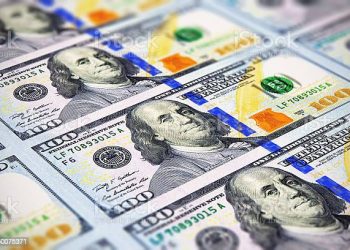The economic landscape in Kenya took a significant hit on Monday as the country’s currency, the shilling, reached an unprecedented low of 150 shillings to the US dollar, as reported by central bank data. The situation is exacerbating the economic challenges faced by this East African nation, which is grappling with high levels of inflation and a substantial debt burden.
A Year-Long Decline: Kenyan Shilling’s Value Erodes
Over the past year, the value of the Kenyan shilling has been steadily eroding, marking a distressing trend. The currency has experienced a loss of nearly 24% of its value against the US dollar. This continuous depreciation has caused growing concerns among citizens and economists alike.
Central Bank’s Official Figures Tell a Grim Tale
Official data from the Central Bank of Kenya confirmed that, as of Monday, the exchange rate stood at 150 shillings to a single US dollar. What’s more, reports suggest that in recent weeks, several commercial banks and currency exchange bureaux had already reached or even exceeded this ominous exchange rate.
The Root Causes of the Shilling’s Fall
Economists and financial experts are pointing to several factors behind this alarming plunge. Ken Gichinga, Chief Economist at the research firm Mentoria Economics, asserts that the primary driver of this decline is the strengthening of the US dollar. He cites the recent upheaval in the Middle East as a key factor, explaining that it has spurred investors to seek safe havens, with the US dollar being a prime choice. Additionally, the high yields offered by US Treasury bonds have also attracted investments away from emerging markets like Kenya.
Impacts on the Economy: Soaring Costs and Growing Debt
The repercussions of the Kenyan shilling’s depreciation are felt in various sectors. Import costs are surging, leading to higher prices for goods and services, and exacerbating the existing inflationary pressures. Furthermore, the country’s substantial debt load, which had exceeded 10.1 trillion shillings (approximately 64.4 billion euros) by the end of June, according to Treasury data, continues to loom large. This figure represents about two-thirds of Kenya’s gross domestic product (GDP).
The increasing cost of servicing this debt, particularly to international creditors like China, is becoming a mounting financial burden for the Kenyan government. To make matters more challenging, debt repayment obligations are due to commence in July.
As Kenya grapples with the challenges posed by this economic turmoil, the government faces the onerous task of stabilizing the currency and addressing the broader economic issues that have contributed to this precarious situation.











